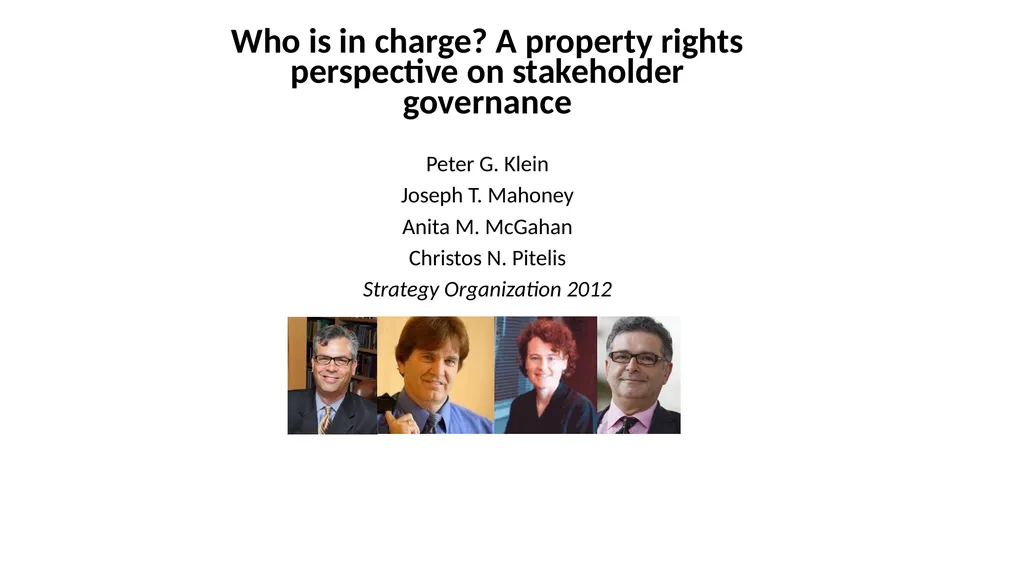
Who is in charge? A property rights perspective on
Author: celsa-spraggs | Published: 2025-05-29
Description: Who is in charge? A property rights perspective on stakeholder governance Peter G. Klein Joseph T. Mahoney Anita M. McGahan Christos N. Pitelis Strategy Organization 2012 RESEARCH QUESTION PROBLEM FORMULATION The paper attacks the
Download Presentation
Download the PPT/PDF: Download
Transcript:
Loading transcript…